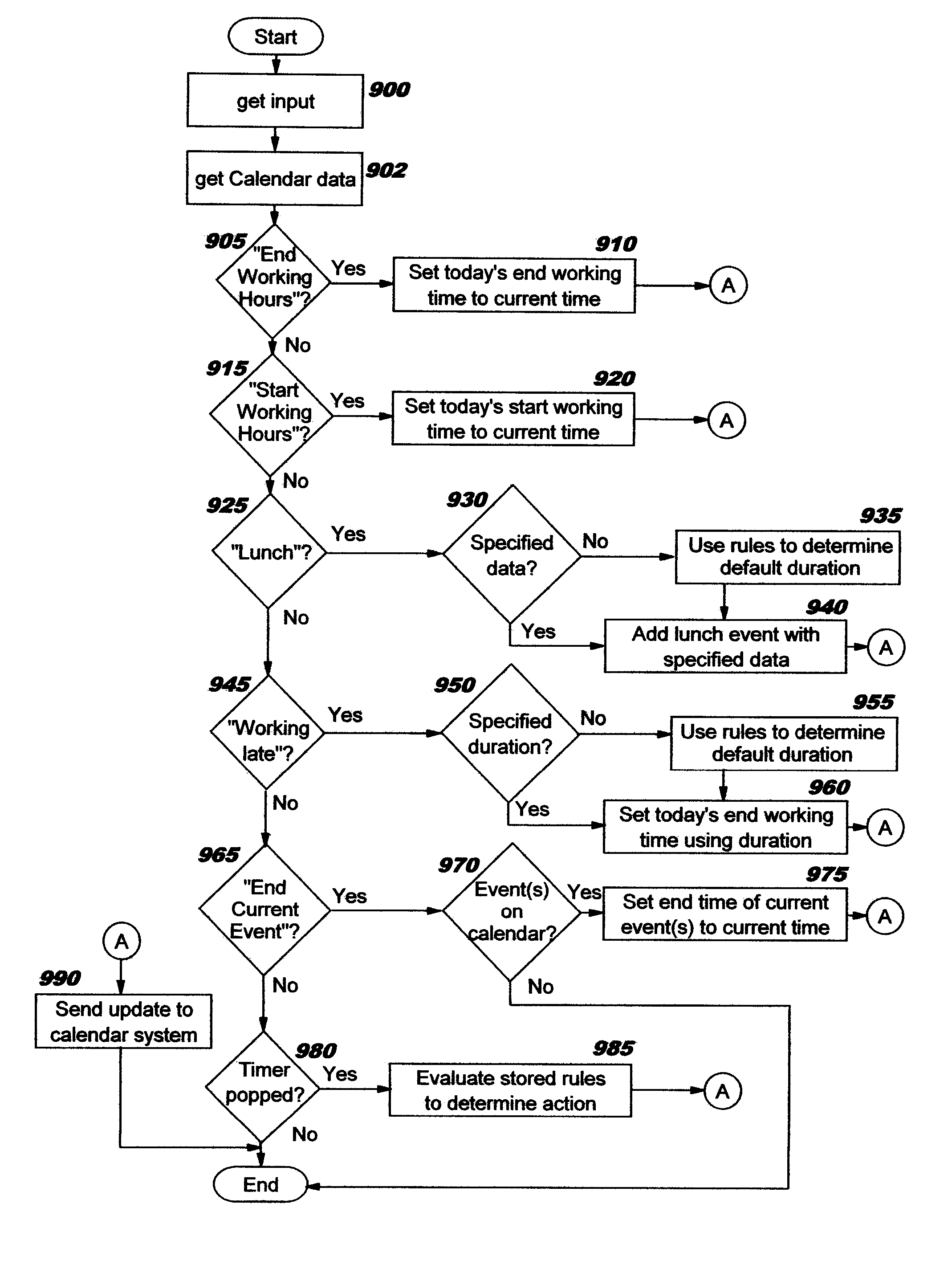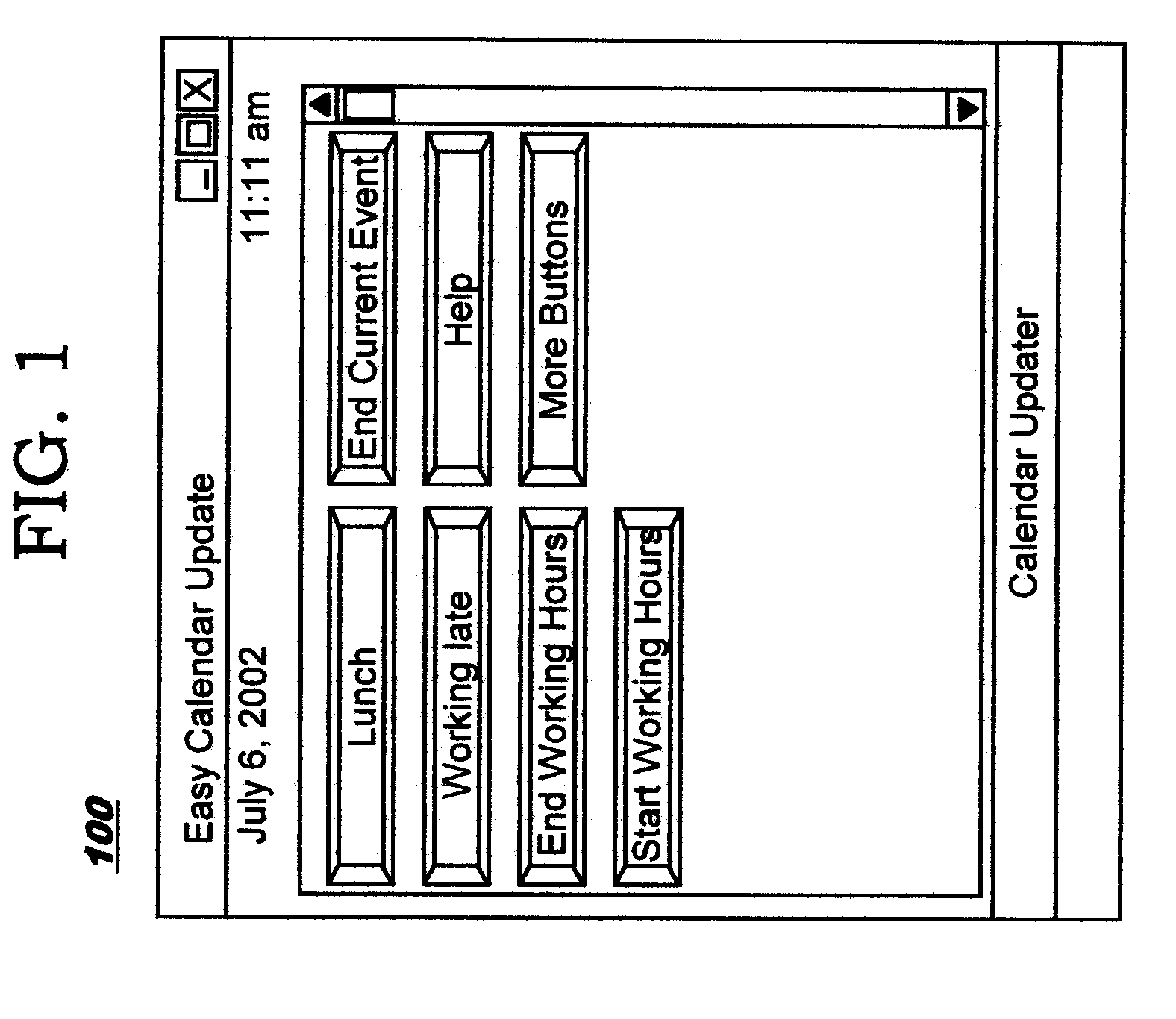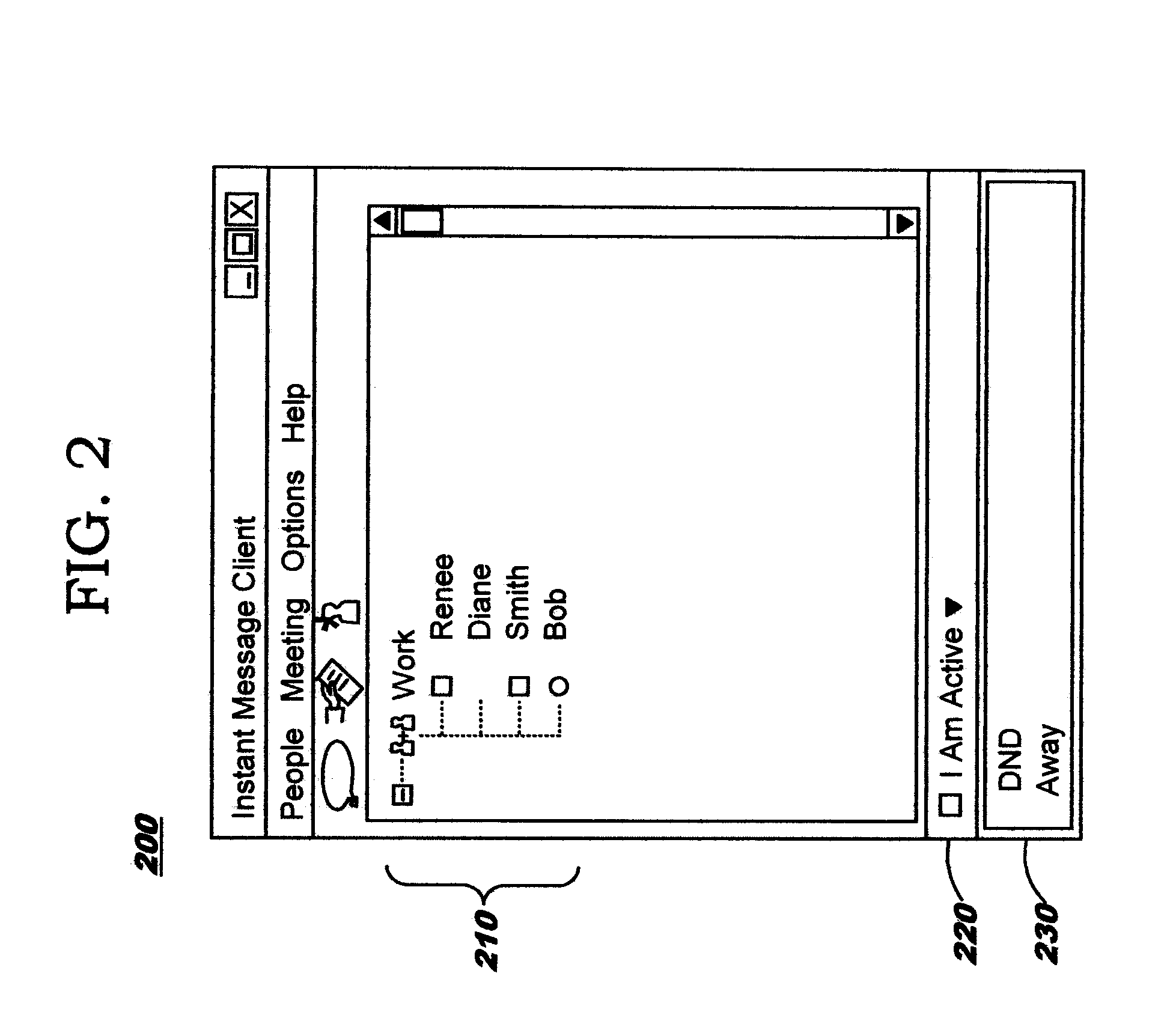Keeping Working Hours and Calendar Entries Up-to-Date
a calendar and working hours technology, applied in the field of computer systems, can solve problems such as inability to precisely control working hours, inability to store previously-stored calendar data, and inability to accurately control working hours
- Summary
- Abstract
- Description
- Claims
- Application Information
AI Technical Summary
Benefits of technology
Problems solved by technology
Method used
Image
Examples
Embodiment Construction
[0047] The present invention defines improved techniques for keeping calendars up-to-date, whereby a person's working hours and actual availability are accurately reflected. Working hours can be conveniently changed, without triggering a reformulation of future calendar events and without corrupting historical calendar events. These changes may be in response to user-generated input and / or application-generated input. When user-generated and / or application-generated input is supported, a person is able to have his current status information reflected consistently among applications and on his calendar without having to make changes in multiple places, saving the person time as well as providing a more accurate view of his availability. The improved accuracy reflected in the user's calendar will be of benefit to other users viewing his calendar as well as to other systems that analyze or process calendar data.
[0048] The term “calendar data”, as used herein, refers to information of ...
PUM
 Login to View More
Login to View More Abstract
Description
Claims
Application Information
 Login to View More
Login to View More - R&D
- Intellectual Property
- Life Sciences
- Materials
- Tech Scout
- Unparalleled Data Quality
- Higher Quality Content
- 60% Fewer Hallucinations
Browse by: Latest US Patents, China's latest patents, Technical Efficacy Thesaurus, Application Domain, Technology Topic, Popular Technical Reports.
© 2025 PatSnap. All rights reserved.Legal|Privacy policy|Modern Slavery Act Transparency Statement|Sitemap|About US| Contact US: help@patsnap.com



